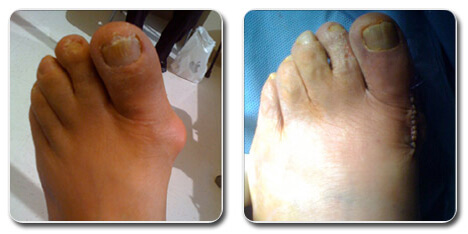The Role of Massage Therapy in Bunion Treatment: A Comprehensive Guide
Bunions are a common foot condition that affects millions of people worldwide. They are characterized by a bony bump that forms on the joint at the base of the big toe, causing the toe to point inward and often leading to discomfort and pain. While there are many treatment options available for bunions, massage therapy has emerged as a popular and effective treatment method. In this comprehensive guide, we will explore the role of massage therapy in bunion treatment and how it can help relieve pain and improve foot function.
Understanding Bunions
Before we dive into the benefits of massage therapy for bunions, it's essential to understand what bunions are and how they develop. Bunions are often caused by a combination of genetic factors and poor footwear choices. Shoes that are too tight or narrow can put pressure on the big toe joint, causing the bones to shift and leading to the development of a bunion over time. Bunions can also be exacerbated by certain activities or conditions that put additional pressure on the feet, such as running or pregnancy.
The Benefits of Massage Therapy for Bunions
Massage therapy has many benefits for people with bunions. One of the primary benefits is pain relief. Massage therapy can help relax the muscles and tissues around the bunion, reducing inflammation and pain. Massage can also increase blood flow to the affected area, which can promote healing and reduce discomfort. Additionally, massage therapy can help improve foot function by increasing flexibility and range of motion in the joints and muscles surrounding the bunion.
Types of Massage Therapy for Bunions
There are several types of massage therapy that can be beneficial for people with bunions. One of the most effective is deep tissue massage, which uses slow, firm pressure to target the deeper layers of muscle and tissue. Deep tissue massage can help break up scar tissue and adhesions around the bunion, improving mobility and reducing pain.
Another type of massage therapy that can be helpful for bunions is trigger point therapy. This type of massage focuses on releasing trigger points, which are areas of tightness and discomfort in the muscles. Trigger point therapy can help relieve pain and improve flexibility in the muscles surrounding the bunion.
Finally, reflexology is a type of massage therapy that can be beneficial for bunions. Reflexology involves applying pressure to specific points on the feet that correspond to different organs and systems in the body. By targeting these points, reflexology can help improve circulation and reduce pain in the feet.
Other Treatment Options for Bunions
While massage therapy can be an effective treatment option for bunions, it's important to note that it may not be enough on its own. In addition to massage therapy, other treatment options for bunions may include:
- Wearing shoes that fit properly and provide adequate support
- Using orthotics or shoe inserts to redistribute pressure on the foot
- Performing foot exercises to improve strength and flexibility
- Taking over-the-counter pain relievers as needed
In some cases, surgery may be necessary to correct severe bunions that do not respond to other treatments.
Conclusion
In conclusion, massage therapy can be a valuable and effective treatment option for people with bunions. By relieving pain, improving foot function, and promoting healing, massage therapy can help individuals with bunions regain their mobility and quality of life. If you are considering massage therapy for bunions, be sure to work with a licensed massage therapist who has experience working with this condition.
See Also:
- Bunion on Top of Foot
- Tailor’s Bunion Pain
- Best Ice Pack for Bunion Surgery
- Tailor’s Bunion Correction
- Types of bunion surgery
- Male celebrities with bunions
- Lapiplasty negative reviews
- 4 weeks after bunion surgery
- what to expect 3 weeks after bunion surgery
- lapiplasty bunion surgery cost
- birkenstock bunion
- shoes for ingrown toenails
- shoes for cuboid syndrome
- best shoes after bunion surgery


Nhận xét
Đăng nhận xét